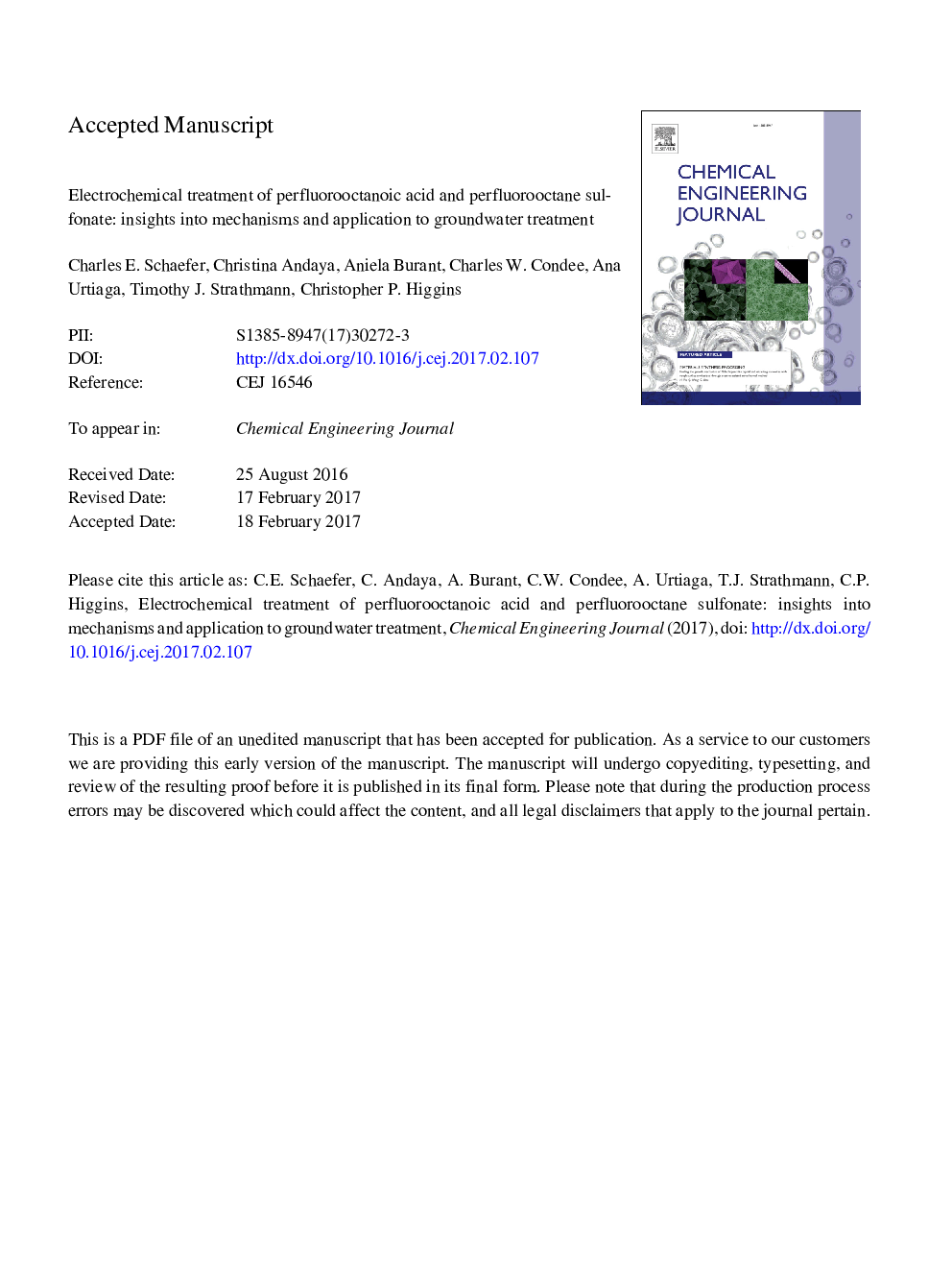| کد مقاله | کد نشریه | سال انتشار | مقاله انگلیسی | نسخه تمام متن |
|---|---|---|---|---|
| 4763226 | 1422961 | 2017 | 39 صفحه PDF | دانلود رایگان |
عنوان انگلیسی مقاله ISI
Electrochemical treatment of perfluorooctanoic acid and perfluorooctane sulfonate: Insights into mechanisms and application to groundwater treatment
ترجمه فارسی عنوان
درمان الکتروشیمیایی پراکسلوروکتانوییک اسید و پرتویوروکتان سولفونات: بینش به مکانیزم و کاربرد آن در درمان آبهای زیرزمینی
دانلود مقاله + سفارش ترجمه
دانلود مقاله ISI انگلیسی
رایگان برای ایرانیان
کلمات کلیدی
موضوعات مرتبط
مهندسی و علوم پایه
مهندسی شیمی
مهندسی شیمی (عمومی)
چکیده انگلیسی
Electrochemical treatment of perfluorooctanoic acid (PFOA) and perfluorooctane sulfonate (PFOS) using a nanocrystalline boron-doped diamond (BDD) anode was investigated in a series of bench-scale batch experiments. Experiments focused on assessing the impacts of chloride electrolyte and of hydroxyl radical scavenger tert-butyl alcohol (TBA) on both the rates of PFOA and PFOS removal, and the corresponding rates of defluorination. Treatment of PFOA and PFOS in natural groundwater at concentrations that might be observed in the field (0.3 and 0.6Â mg/L PFOA and PFOS, respectively) was also evaluated and compared to results obtained in electrolyte solutions with elevated PFOA and PFOS concentrations (15 and 10Â mg/L, respectively). Results showed that the presence of chloride and TBA had minimal effects (decreasing rates by <20%) on PFOA/PFOS removal and defluorination for the range of applied current densities (3-50Â mA/cm2), at both the low and elevated PFOA/PFOS concentrations. The latter observation is consistent with direct oxidation of PFOA/PFOS at the electrode surface rather than reaction with electrochemically generated hydroxyl radicals. In addition, treatment rates of PFOA and PFOS in natural groundwater were within a factor of two of those measured in electrolyte at a current density of 15Â mA/cm2 (for both low and concentration experiments). These findings indicate that hydroxyl radical scavengers that may be present in natural groundwater are unlikely to have a major adverse impact on PFOA and PFOS electrochemical treatment. Finally, it was demonstrated that perchlorate produced by BDD oxidation of Clâ could be biologically treated in bioaugmented sand columns, with a 3 order-of-magnitude removal observed within a 9-day residence time.
ناشر
Database: Elsevier - ScienceDirect (ساینس دایرکت)
Journal: Chemical Engineering Journal - Volume 317, 1 June 2017, Pages 424-432
Journal: Chemical Engineering Journal - Volume 317, 1 June 2017, Pages 424-432
نویسندگان
Charles E. Schaefer, Christina Andaya, Aniela Burant, Charles W. Condee, Ana Urtiaga, Timothy J. Strathmann, Christopher P. Higgins,
